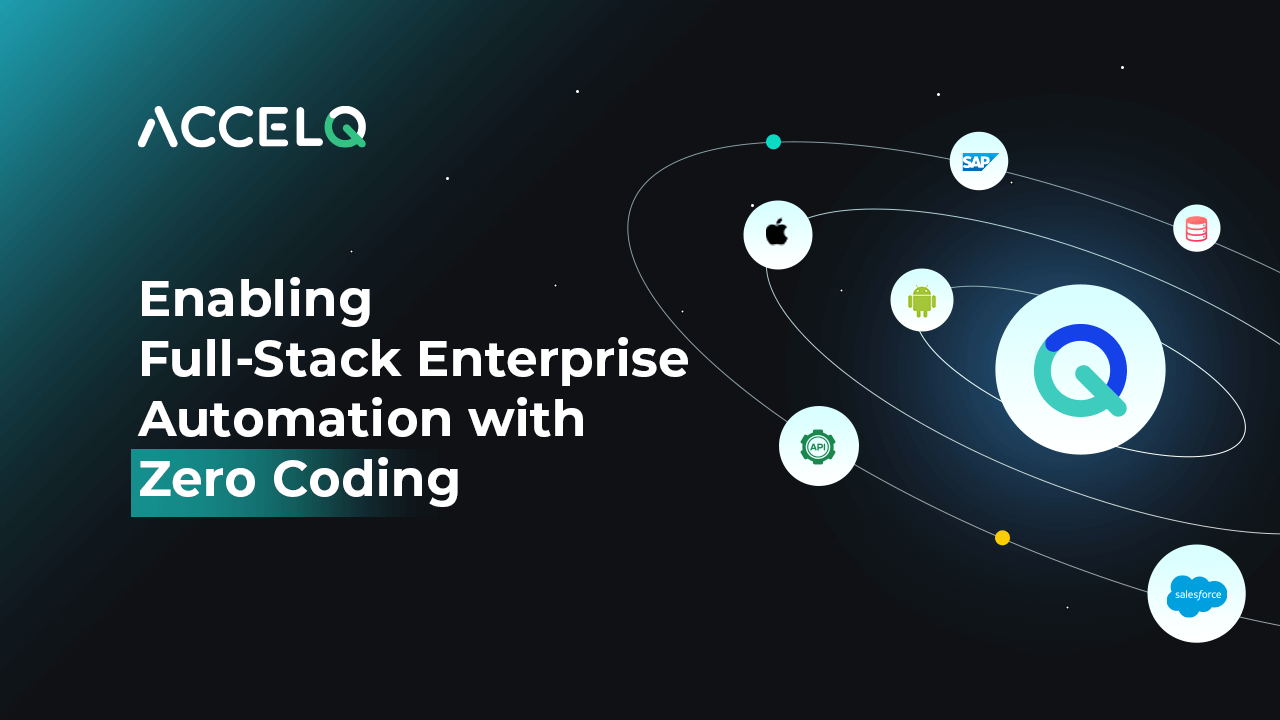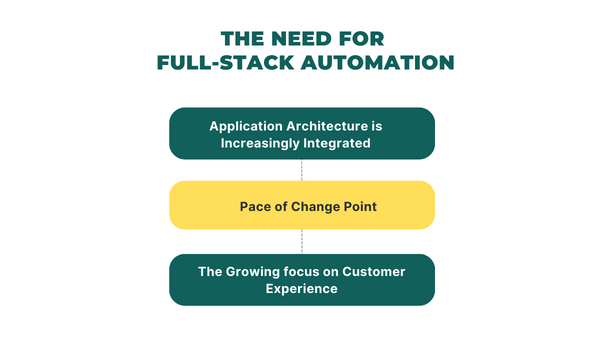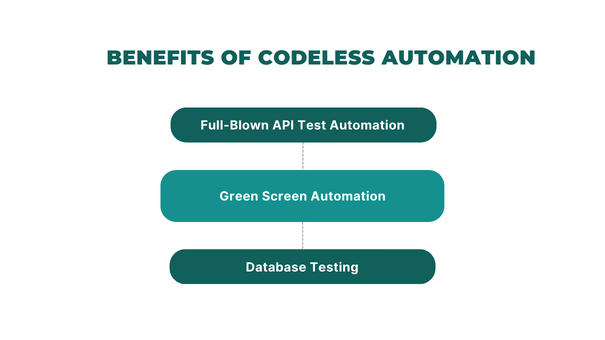
Automation has been around for more than two decades now. Almost every organization today leverages automation to minimize dependence on manual labor while improving the efficiency and quality of workflows.
But despite the widespread adoption of automation, not many have ventured into the realm of full-stack automation. One of the main reasons for this is the “supposed” complexity in enabling it. But did you know that achieving true end-to-end workflow automation is possible without writing a single line of code?
The Need for Full-Stack Automation

The global robotic process automation market size would reach $25.66 billion by 2027 at a CAGR of 40.6%. Although there is massive traction toward automation, many organizations still automate only some aspects of their enterprise workflows. Therefore, they do not enable end-to-end enterprise automation.
To that end, here are three reasons that make full-stack automation an absolute necessity today:
-
Application Architecture is Increasingly Integrated
Enterprise technology has evolved a lot. Gone are the days when different teams and departments relied on siloed and discrete tools and systems to accomplish tasks. Today, thanks to microservices, the underlying enterprise infrastructure is increasingly cohesive.
With application architecture becoming increasingly componentized and integrated, there is a growing need to streamline workflows across APIs, cloud databases, validations, and more. This is essential to improve efficiency and productivity.
-
The Growing focus on Customer Experience
Increasing focus on customer experience has made full-stack automation the need of the hour. Organizations invariably look to overcome the challenge of discrete customer experiences and move towards delivering a consistent and seamless omnichannel experience.
By automating every workflow that makes up the customer experience, full-stack automation makes it possible for organizations to achieve the level of customer satisfaction that today’s customers have come to expect.
-
The Pace of Change
As DevOps and Agile practices become the mainstay, organizations need to be able to keep up with the pace of change. Full-stack automation allows them to match the speed of change brought about by concepts like CI/CD.
Using such automation, they can constantly update the underlying codebase of the website or app and ensure they meet the evolving needs of customers and the business and do not disrupt the overall customer experience.
The Benefits of Codeless Automation
Despite the rate at which application architectures are getting unified and integrated, most enterprise teams continue to work in silos. This causes API, UI, and backend validations to be done independently, which leads to sub-par outcomes and results.
To be able to automate across the full stack seamlessly, organizations need to adopt codeless automation to overcome the challenge of disintegrated frameworks and technologies.
In essence, codeless automation platforms help support the entire enterprise application portfolio and complex technology stack with the same simplicity as basic UI testing. By delivering capabilities for all web and UI interfaces, codeless automation allows for seamless handling of new and evolving technologies along with out-of-the-box support for complex and dynamic elements.
Right from extensible frameworks for third-party custom controls to robust, AI-driven element handling and self-healing, codeless automation enables organizations to automate workflows across the entire technology stack – without writing a single line of code.
To that end, let’s profoundly look at some of the top benefits of codeless automation:

To that end, here are three reasons that make full-stack automation an absolute necessity today:
-
Full-Blown API Test Automation
Codeless automation allows organizations to achieve end-to-end validations with API and UI in the same flow. By offering REST, SOAP, and custom protocol support for complete API testing, codeless automation enables flexible and powerful assertion building and API validations.
You can make the most of API chaining and regression suite capability for mature API testing and enjoy auto-generation of test cases for different permutations of data.
-
Green Screen Automation
With codeless automation, you can enable natural language-based automation of any 3270 or 5250 terminals. A modern platform offers in-built support for HLL and COM-based terminal emulators along with seamless support for IBM PCOM Attachmate emulator clients.
You can easily validate true end-to-end flow across frontend, backend, API, and Mainframes. Furthermore, you can enjoy Hummingbird and extensible HLL and OLE/COM support.
-
Database Testing
Codeless automation platforms offer extensive support for automated testing on databases such as Oracle, SQL Server, MySQL, PostgreSQL, and Teradata. As such, you can easily and quickly query unstructured databases and parse the response in an automated manner.
They also help with stored procedure execution and verification to accelerate your automation efforts with no technical or programming skills.
How You Can Enable End-to-End Workflow Automation With ACCELQ
ACCELQ offers a codeless, AI-powered automation platform that can support the entire enterprise application portfolio. Our enterprise tech automation platform paves the way for multichannel automation across web, mobile, API, desktop, and backend, allowing for seamless automation across the entire enterprise stack. We take a revolutionary approach to business assurance, helping businesses achieve continuous test automation – with zero coding.
So, what makes ACCELQ different from all the other tools in the market today? Most automation tools today are extremely vendor specific; with organizations using different platforms for different purposes, seamless, omnichannel automation is the need of the hour, that ACCELQ provides. Regardless of whether you use Salesforce for your sales activities or Oracle Financial Cloud to maintain your finances or Workday for HR-related tasks, with ACCELQ, we can cater to the automation requirements across all platforms.
The vendor-agnostic nature of our tool means we can automate any task across any packaged app - irrespective of the vendor or partner. Our tool works seamlessly in a multi-cloud app environment, enabling you to reap the maximum benefits of automation across your enterprise tech stack.

Using our enterprise tech automation platform, enterprises can fully and easily extend the natural language interfaces to their needs and adapt to their unique technology requirements. The platform’s marketplace-driven concept constantly increases the ecosystem of libraries, and the annotation-based import speeds up the process of importing custom libraries.
Moreover, the platform integrates seamlessly with the SDLC toolset. It works well with tools such as GitHub, Jenkins, Jira, Bitbucket, Copado, Team City, TFS, Bamboo, Rally, Open API, AutoRABIT, etc.
We follow industry-standard safety protocols and implement rigorous process-driven frameworks across the QA automation lifecycle. All data is segregated into a tenant-specific schema and backed up on a regular basis. We offer our platform via fully managed and secure hosting, ensuring application access is restricted via OAuth 2.0-based security and tenant group access policies. Further, we offer enterprise technology support for custom apps as well as for multi-cloud SaaS automation, including:
To that end, here are three reasons that make full-stack automation an absolute necessity today:
- Support for web technologies like Angular, JS, Vue JS, material design, and more.
- Mobile automation support for native and hybrid apps on Android and iOS.
- AI testing support for RESTful, SOAP, Graph OL, and custom protocols.
- Mainframe and desktop automation for IBM Attachmate and Hummingbird emulators.
- Backend and middleware support for message queues, relational databases, No SQL databases, SSH validation, email validation, and PDF validation.
Looking to enable end-to-end workflow automation? Contact us today and successfully automate all aspects across your enterprise stack – without writing a single line of code!
Related Posts
 BDD in Testing
BDD in Testing
BDD in Testing
 Black Box Testing
Black Box Testing


































